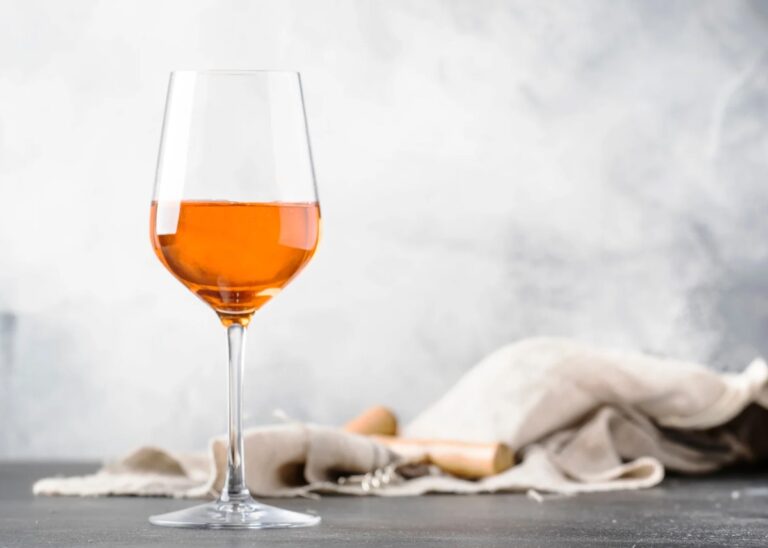[et_pb_section fb_built=”1″ _builder_version=”4.11.1″ _module_preset=”default” global_colors_info=”{}”][et_pb_row _builder_version=”4.11.1″ _module_preset=”default” global_colors_info=”{}”][et_pb_column type=”4_4″ _builder_version=”4.11.1″ _module_preset=”default” global_colors_info=”{}”][et_pb_text _builder_version=”4.11.1″ _module_preset=”default” global_colors_info=”{}”]Contents:
- The Bordeaux Wine Bottle
- The Burgundy Wine Bottle
- The Alsace Wine Bottle
- The Champagne Bottle
- Unusual Wine Bottle Shapes & Colors
[/et_pb_text][et_pb_video src=”https://youtu.be/QLPc-Qa7cKY” _builder_version=”4.11.1″ _module_preset=”default” width=”75%” width_tablet=”85%” width_phone=”100%” width_last_edited=”on|phone” module_alignment=”center” hover_enabled=”0″ global_colors_info=”{}” sticky_enabled=”0″][/et_pb_video][et_pb_text _builder_version=”4.11.1″ _module_preset=”default” global_colors_info=”{}”]
Transcript:
Hello, bonjour, and welcome to the new Bonner Private Wines video. Today I want to talk to you about the different shapes of different wine bottles. I’m sure you’ve noticed that wine comes with different shapes in different types of bottles. There’s just a handful of names and shapes that you need to have in mind to navigate this topic with ease.
So it’s no need to go complicated here, but it will help you understand why those different shapes exist and what they mean. It’s easy to comprehend, but it’s important because it can influence your wine buying decisions and will certainly impact how you appreciate your vino too. So let’s go.
Wine Bottle Shapes Explained
There are only four bottle shapes that you need to know about. We’ll go a little deeper in just a moment, but let’s start with the very basics. The four type of wine bottles all named after French wine regions, because I guess historically France has been at the forefront of wine making and adopting different shapes for different wine regions. So at least the French have been dominant enough in terms of image to have wine bottles, shapes named after their French regions rather than being named after Spanish regions or German or Italian.
Those are the bottle shape that you probably recognize; the Burgundy shape, the Alsace shape right here, and of course, the champagne shape. So let’s have a quick look around those four.
The Bordeaux Shape
So this shape right here is the most common and the most classic shape for wine bottles. And it’s called the Bordeaux shape because it’s one that was always used in Bordeaux since the invention of wine bottles in the 18th, 19th century.
Also the one that the British would get, they bought a wine bottle and what they would call the claret wine back then, into. Of course, the shape is used elsewhere. In fact, everywhere now, including in other very classic and historical wine regions such as Roma in Spain, you have an example here you’ll find some counties bottled in these Bordeaux shape in Italy as well, outside of Europe, in the new world, such a shape generally indicates a wine made in a Bordeaux style rather than in a Burgundy or Rhone style.
So generally the classic style within tannins, often with Bordeaux grapes such as a cabernet sauvignon or a merlot. It’s also used for the Argentine malbecs that you know very well or Chilean carménère, because those grapes originally were French as well, and from Bordeaux. In fact, it’s also used for all other wines that you — don’t really fall into the other categories that we’ll detail in what follows. It’s essentially the default shape, if you wish, that serves many whites and also rosés, I have white wine from Bordeaux here, it’s white, but it’s that shape as well. Lots of rosés come in that shape. But let’s talk about the other shapes and so by contrast, you understand better what I’m talking about here.
The Burgundy Shape
Now, this is what we call the Burgundy shape, mainly because, again, the British of the 19th and 18th, 19th century were really the first to import fine wine, had primarily access to two types of wines at the time: the Bordeaux wines that we’ve just talked about, and Burgundy wine. And they could easily distinguish the two just with the shape of their respective bottles.
So this shape is used for French Burgundy wines, of course, and all pinot noir and pinot like bottlings around the world for, say, generally lighter fruity wines, at least in their approach. You never find generally a pinot noir in a Bordeaux shape bottle. This is also used for many wines from the white grape from Burgundy, namely chardonnay. Where it gets a little more confusing with this shape is that it’s also used for the Rhone style wines made from grapes such as Syrah or Grenache, such as the Chateauneuf-du-Pape in France, or and Cote de Rhone, which are ones that are much richer, denser than the Pinot noir.
So in California, as an example that you may understand, you’d have the Bordeaux style reds, the cabernets and the merlots made often in Northern California, such as in Napa Valley in Sonoma, pinot noirs — well, that’s the Bordeaux shape one. But the pinot noir in Napa Valley will be bottled in a Burgundy shape bottle.
All the Central Coast pinots will also come in that shape. But then the Rhone style wines from the Central Coast as well, the syrah, the grenache mourvedre blends that are richer, more alcoholic and opulent wines, also come in this Burgundy shape. So this distinction in bottle shape helps you understand the style that you may expect from buying a wine.
The more classic Napa-style cabernet or merlot based blends come in the Bordeaux shape style while the pinots in the Rhone style Central Coast blends, let’s say, will come with the Burgundy shape. It can tell you where the wine makers or the marketers get their inspiration from with specific wine. More of the classic Bordeaux style or the Central Coast, Burgundy or Rhone style.
All this generally applies also quite consistently in most wine regions around the world as well. Whether where they make these styles or at least when they make those two styles, in Italy, Argentina and Chile, Australia or New Zealand even, you will find this distinction in style that’s illustrated through the shape of the bottle.
The Alsace Shape
This shape right here is what is called the Alsace shape or Alsatian shape named after the French wine region that borders Germany to the north east because it is one that they’ve used historically there to bottle their aromatic whites, in particular the riesling.
So the gewurztraminers, the pinot gris, it’s sometimes called the flute shape, I suppose, because it looks a little bit like a flute, at least it’s elongated. It’s also the shape for German whites, like the Mosel riesling, for example, and it’s used around the world to identify those aromatic whites that have a lot of bursting flavors because the Alsace, that region, is also traditionally specialized in those wines.
They also make some late harvest sweet wines there. So this is also the shape used for a lot of sweet desert botrytis and aromatic whites around the world, like in Oregon or Washington, for example. Some ice wines even sometimes come with this shape. A very distinctive and a fine, very elegant shape as well. And now you know what it means.
The Champagne Shape
And this shape is, of course, used globally for sparkling wines. And it’s named after the most famous of all sparkling wine regions: Champagne. You know this shape, not much to say here, except that this shape is adopted worldwide for sparkling and hasn’t really been rethought or competed with.
First, because, well, it makes a wine, even if it’s a Burgundy sparkling, which is the case here, look like a Champagne, which is always a positive reference or even a blue wine, which is a bit of an oddity, and we’ll put this aside for now, but it makes any sparkling wine look like a champagne.
But also because the shape makes the bottle with a thick glass very resistant to explosions and to resist and withstand the high pressure that comes with sparkling wines. And that’s a big part of why those bottles have this particular shape, even though it’s been modified slightly and there are different versions.
You have a couple of those right here as well, especially with prestige based Champagnes. They have a bit of more creativity with this bottle shapes, but the Champagne bottle shape is the base for sparkling wines all around the world.
Unusual Wine Bottle Shapes & Colors
And those four main wine bottle shapes that we’ve just talked about are your basic ones you need to know about.
But of course there are more niche shapes, countless of them, that are generally very regional. You have the ancestral fiasco from Italy that traditionally bottles the Chianti wines, even though it’s not used all that much anymore. You have some Portuguese port shapes, a variety of them. You have the traditional Provence shape or the jewel shape called the clavelin, very traditional from France as well.
Those are more anecdotal or very local particular shapes, and some wineries, including in the New World, may have some fun using different shapes, using those traditional shapes because they look nice and a bit different. They want to differentiate themselves for the same reasons marketers may want to use different colors of glass bottles as well; a nice example here.
So why is there different glass colors for different bottlings? Generally the glass for red wine bottles is either green or it can be a little bit more brownish. They just look slightly different and they’re dark with these dark hues because this prevents the damaging light wavelength to get through the glass and damage and hurt the wine. It protects the liquid if you wish.
Same goes for white wines, but some wineries, as you’ve noticed, choose to bottle their wines with a transparent glass, and those are used for ones that are not meant to age, light and easy short term enjoyment wines, the thirst quenching whites, and the rosés in particular. So for those frivolous wines, the consumer likes to be able to see the color of the wine when they buy it.
It actually influences your winemaking decision. It makes you want to buy it more. It gives you also an indication of what style of rosé or white wine you’re going to be buying. Is it dark? Is it deep? The transparent bottles allow you to see this, and that’s what it’s used for, even though it’s not ideal for storing or for aging. But you don’t need to do that for those styles.
And there you go. Here you have it. Your quick guide to understanding all the main wine bottle shapes. I’ll leave it here for today, and we’ll see you soon in the wonderful world of wine.
[/et_pb_text][/et_pb_column][/et_pb_row][/et_pb_section]



